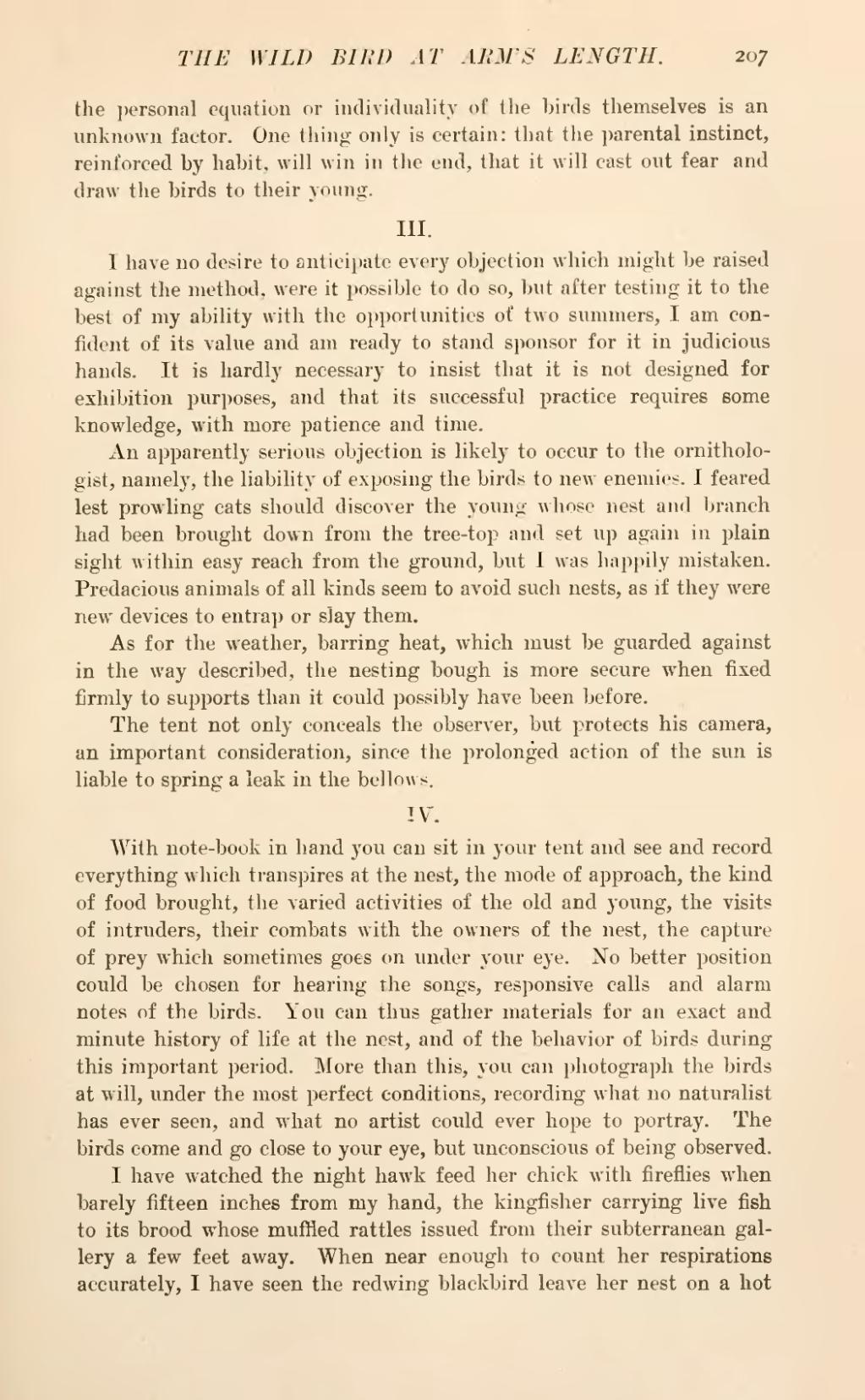the personal equation or individuality of the birds themselves is an unknown factor. One thing only is certain: that the parental instinct, reinforced by habit, will win in the end, that it will cast out fear and draw the birds to their young.
III.
I have no desire to anticipate every objection which might be raised against the method, were it possible to do so, but after testing it to the best of my ability with the opportunities of two summers, I am confident of its value and am ready to stand sponsor for it in judicious hands. It is hardly necessary to insist that it is not designed for exhibition purposes, and that its successful practice requires some knowledge, with more patience and time.
An apparently serious objection is likely to occur to the ornithologist, namely, the liability of exposing the birds to new enemies. I feared lest prowling cats should discover the young whose nest and branch had been brought down from the tree-top and set up again in plain sight within easy reach from the ground, but I was happily mistaken. Predacious animals of all kinds seem to avoid such nests, as if they were new devices to entrap or slay them.
As for the weather, barring heat, which must be guarded against in the way described, the nesting bough is more secure when fixed firmly to supports than it could possibly have been before.
The tent not only conceals the observer, but protects his camera, an important consideration, since the prolonged action of the sun is liable to spring a leak in the bellows.
IV
With note-book in hand you can sit in your tent and see and record everything which transpires at the nest, the mode of approach, the kind of food brought, the varied activities of the old and young, the visits of intruders, their combats with the owners of the nest, the capture of prey which sometimes goes on under your eye. No better position could be chosen for hearing the songs, responsive calls and alarm notes of the birds. You can thus gather materials for an exact and minute history of life at the nest, and of the behavior of birds during this important period. More than this, you can photograph the birds at will, under the most perfect conditions, recording what no naturalist has ever seen, and what no artist could ever hope to portray. The birds come and go close to your eye, but unconscious of being observed.
I have watched the night hawk feed her chick with fireflies when barely fifteen inches from my hand, the kingfisher carrying live fish to its brood whose muffled rattles issued from their subterranean gallery a few feet away. When near enough to count her respirations accurately, I have seen the redwing blackbird leave her nest on a hot

